The Battle of Sekigahara
I tried to summarize the episodes of the warlords who participated in the Battle of Sekigahara.
Sekigahara Town in Gifu Prefecture is the site of a battle that took place on September 15, 1600, between the Eastern Army, led by Ieyasu Tokugawa, and the Western Army, led by Mitsunari Ishida. The “Battle of Sekigahara” was settled in six hours from the start of the battle. The Eastern Army, led by Ieyasu Tokugawa, won a landslide victory, and as a result, the Toyotomi family fell to a feudal lord of 650,000 koku*. And Tokugawa Ieyasu’s government (Tokugawa shogunate) was established. There are many historical and sightseeing spots related to the Battle of Sekigahara in Sekigahara Town.
*Koku is a unit of volume, and 1 koku = about 180 liters. 1 koku of rice weighs about 140-150kg. 1 koku is sometimes referred to as the total amount of rice consumed by a person in a year.
Battlefield layout map of the Battle of Sekigahara
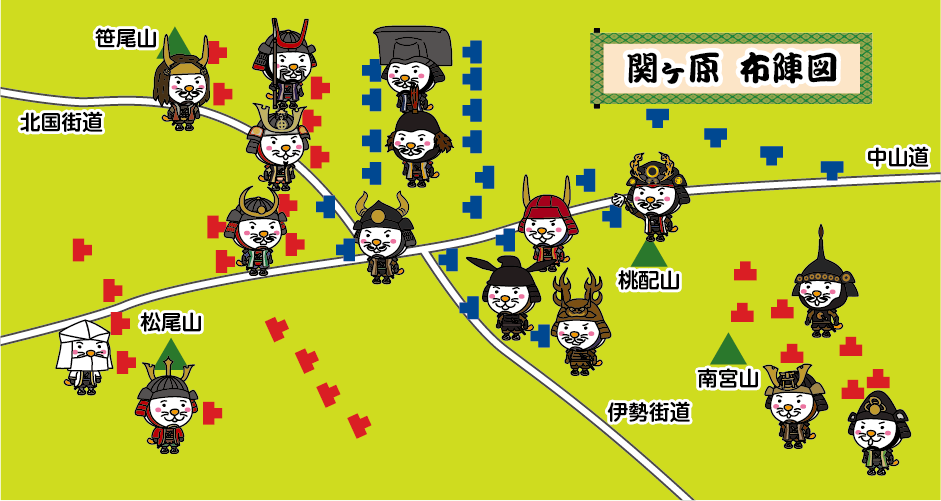
The Battle of Sekigahara was a faction battle that broke out after the death of Toyotomi Hideyoshi, between Tokugawa Ieyasu’s forces (Eastern Army), which aimed for world dominance, and the anti-Tokugawa forces (Western Army), including Ishida Mitsunari, who supported Hideyoshi’s son, Toyotomi Hideyori. A total of 90,000 soldiers from the Western Army and 80,000 from the Eastern Army took up camp at Sekigahara, and it is said that between 6,000 and 8,000 people died in the battle.
Historic Site: Sekigahara Battlefields, Decisive Battlegrounds
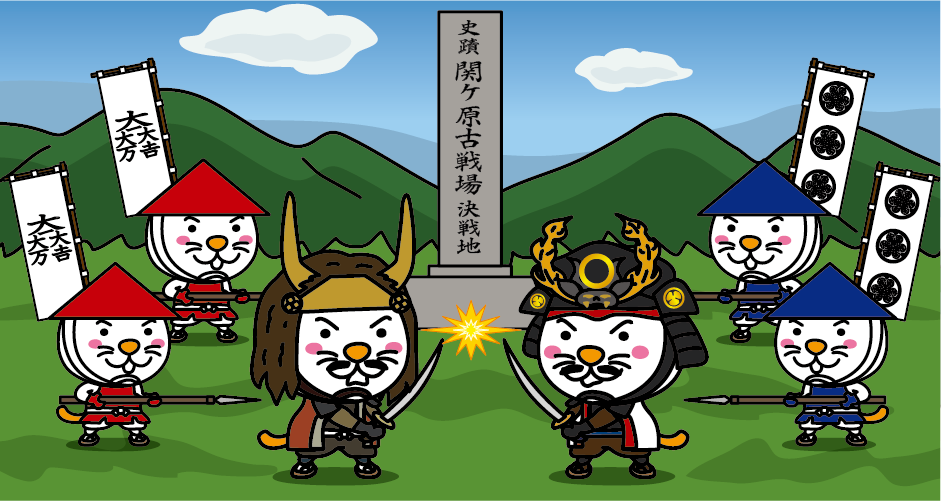
In the early stages of the Battle of Sekigahara, the Western army had the upper hand, but Hideaki Kobayakawa, who had secretly communicated with the Eastern Army, changed sides and the Eastern army reversed. While the generals of the Western Army were routed, the fiercest battle of the Battle of Sekigahara took place at the “Decisive Battlegrounds” of the old battlefields of Sekigahara. At the “Decisive Battlegrounds”, there is a stone monument with the words ” Historic Site: Sekigahara Battlefields, Decisive Battlegrounds”, and flags with the family crests of the Tokugawa and Ishida families are hoisted.
Historic Site: Sekigahara Battlefields, Grave of Yoshitsugu Otani
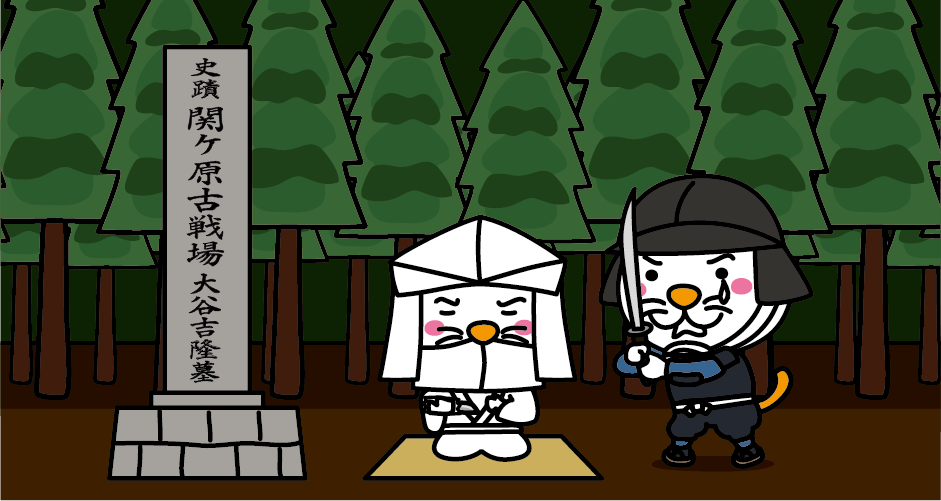
Yoshitsugu Otani, an ally of Mitsunari Ishida, sensed the disturbing movements of Hideaki Kobayakawa and set up camp directly in front of Mt. Matsuo. As expected, Hideaki Kobayakawa defected to the Eastern Army, and Yoshitsugu Otani’s corps (600 soldiers) intercepted the attack by Hideaki Kobayakawa’s corps (15,000 soldiers). Four corps (4,200 soldiers) includingYasuharu Wakisaka’s corps also switched sides, and Yoshitsugu Otani’s corps, which was attacked from three sides, was annihilated. Yoshitsugu Otani committed suicide. Before committing suicide, Yoshitsugu Otani, who was suffering from leprosy, made a last will to his close aide, Gosuke Yuasa, “Don’t expose my disfigured face to the enemies.” When Gosuke Yuasa finished burying Yoshitsugu Otani’s head, he was discovered by Todo Takanori (Todo Takatora’s nephew). When Gosuke Yuasa was killed by Todo Takanori, he tried to protect the honor of Yoshitsugu Otani in exchange for his own head, saying, “I don’t want anyone to tell me that I buried my master’s head here.” Impressed by Gosuke Yuasa’s loyalty, Takanori Todo never answered the whereabouts of Yoshitsugu Otani’s head even when questioned by Ieyasu Tokugawa. Later, the Todo family erected the graves of Yoshitsugu Otani and Gosuke Yuasa.
Historic Site: Sekigahara Battlefields, Hideaki Kobayakawa Camp Site (Mt. Matsuo)
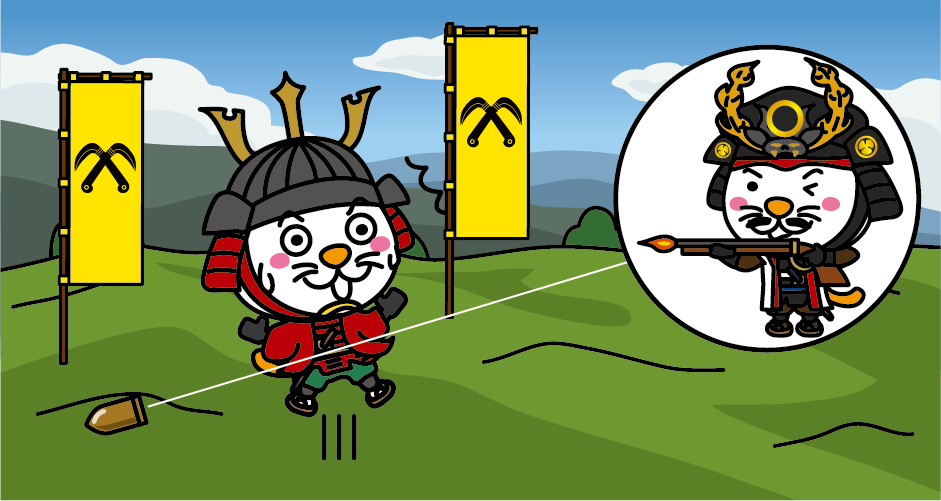
Hideaki Kobayakawa was stationed on Mt. Matsuo (altitude 293m). Kobayakawa Hideaki’s encampment is a camp that uses a mountain castle from the Northern and Southern Courts period (around the 15th century), where remains of earthen walls and moats remain. You can see the old battlefields of Sekigahara from the top of Mt. Matsuo.
In the early stages of the battle, Hideaki Kobayakawa stood on the sidelines as the battle progressed in favor of the western forces. There is a very famous episode in which Ieyasu Tokugawa fired his guns into the camp of Kobayakawa Hideaki, who remained on the sidelines, and urged Hideaki Kobayakawa to attack the Western Army.
By the way, Hideaki Kobayakawa is the nephew of Kitanomandokoro, the lawful wife of Hideyoshi Toyotomi, but when he arrived at Mt. Matsuo, he did not make it clear whether he would join the Eastern or Western Army. Mitsunari Ishida approached Hideaki Kobayakawa for the position of Kanpaku (the highest rank of court nobles, a government post that assists the emperor) until the young Hideyori Toyotomi grew up, and tried to get Hideaki Kobayakawa to join the Western Army. But Hideaki Kobayakawa turned to the Eastern Army because,
Mitsunari Ishida criticized Hideaki Kobayakawa’s actions during the dispatch of troops to Korea, and due to Mitsunari Ishida’s slander, he was forced to transfer from Chikuzen Chikugo (now Fukuoka Prefecture) with 300,000 koku to Echizen (now Fukui Prefecture) with 150,000 koku. He hated Ishida Mitsunari.
After the death of Hideyoshi Toyotomi, he was indebted to Ieyasu Tokugawa who restored Hideaki Kobayakawa’s former territory of 300,000 koku.
Kitanomandokoro advised him to side with Ieyasu Tokugawa.
Historic Site: Sekigahara Battlefields, Ieyasu Tokugawa First Camp Site (Mt. Momokubari)
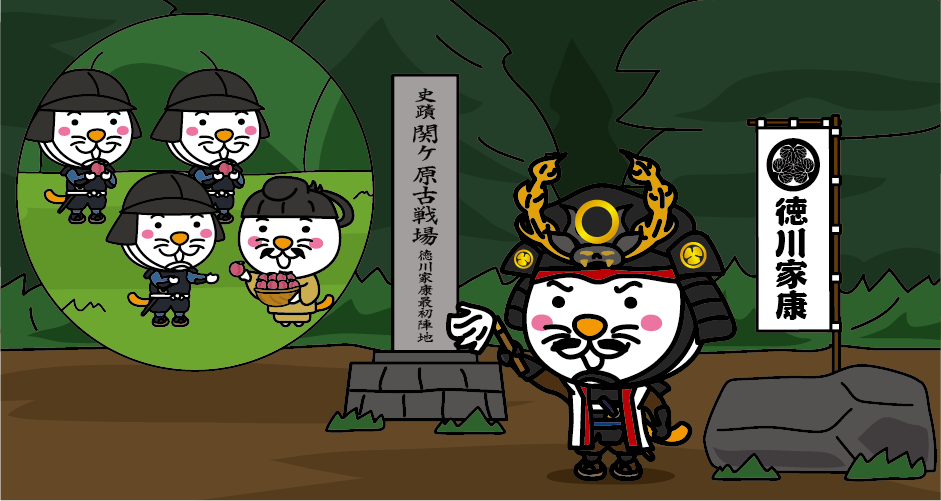
Early in the morning of the battle, Tokugawa Ieyasu moved his troops from Mino Akasaka to Mt, Momokubari, he set up camp (Ieyasu Tokugawa’s first camp) in the middle of Mt. Momokubari. The name “Mt. Momokubari” comes from the legend that during the Jinshin War (672), when the villagers offered mountain peaches to Prince Oama, the peaches were so delicious that he distributed them to his soldiers to boost their morale. “Momokubari” means handing out peaches in Japanese. Because Prince Oama defeated Prince Otomo in the Jinshin War, it is said that Ieyasu Tokugawa set up a camp on Mt. Momokubari as this auspicious occasion, a seat stone that is said to have been used by Ieyasu Tokugawa during the battle still remains.
Historic Site: Sekigahara Battlefields, Mitsunari Ishida Camp Site (Mt. Sasao)
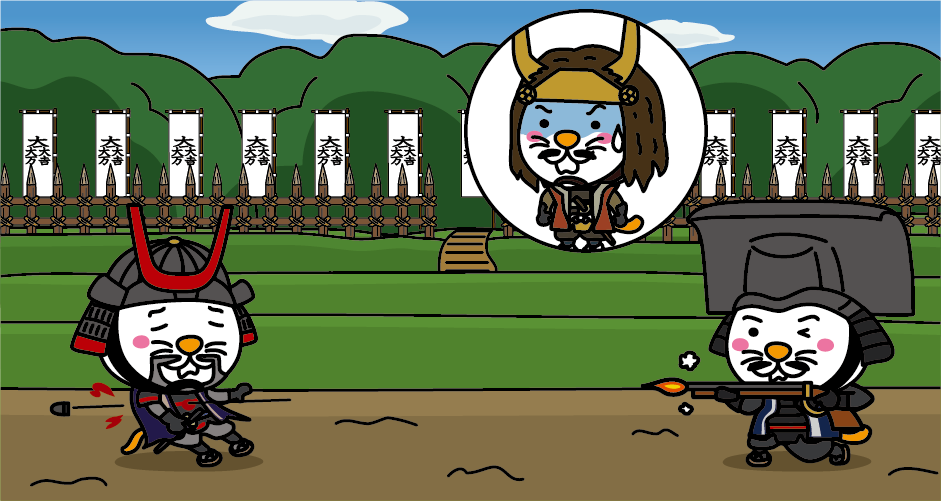
Mitsunari Ishida took up positions on Mt. Sasao (altitude 200m), located northwest of the “Decisive Battlegrounds”. At the site of Mitsunari Ishida’s camp, the “Takeyarai/Babousaku” (enclosure made of bamboo and logs), which was built to protect against enemy attacks, has been restored. In the battle, Mitsunari Ishida is said to have placed Sakon Shima in front of Takeyarai and commanded him from the summit. In the early stages, the Sakon Shima corps put up a good fight, but Nagamasa Kuroda’s gun corps shot them from the side and wounded Sakon Shima.
After that, when Hideaki Kobayakawa changed sides, the Western Army collapsed, and they were routed one after another, and Mitsunari Ishida also fled in the direction of Mt. Ibuki. Sakon Shima charged Nagamasa Kuroda’s corps again and was killed by the enemy’s gunfire.
Hidemoto Mohri’s Episode “Empty Lunch Box of the Prime Minister”

Hidemoto Mohri commanded the Mohri army as a representative of Terumoto Mohri, who became the supreme commander of the Western Army. The Mohri army takes up positions on Mt. Nangu (altitude 419m) behind Ieyasu Tokugawa’s main camp on Mt. Momokubari. The Mohri army intended to descend from Mt. Nangu and attack the Tokugawa army from behind, but they were blocked by Hiroie Yoshikawa’s corps of the Mohri family, which was positioned in front of them as a spearhead force, and they were unable to advance. In addition, even in response to a sortie request from the Masaie Nagatsuka’s corps etc., Hidemoto Mohri only made excuses such as “I can’t go out to battle because of the thick fog,” and “I can’t go out to battle because I’m feeding the soldiers lunch boxes.” In the end, the Western Army (15,000 soldiers in Hidemoto Mohri’s headquarters, 3,000 soldiers in Hiroie Yoshikawa’s corps, 1,500 soldiers in Masaie Nagatsuka’s corps, 1,800 soldiers in Ekei Ankokuji’s corps, and 6,600 soldiers in Morichika Chosokabe’s corps), which was stationed on Mt. Nangu, ended the battle without fighting the Eastern Army.
By the way, Hiroie Kikkawa was secretly communicating with the Eastern Army in order to protect the Mohri family’s territory, and this episode was later handed down as “Saisho-dono no Kara Bento (empty lunch box of the prime minister).”
Yoshihiro Shimazu’s Episode “Sutegamari”
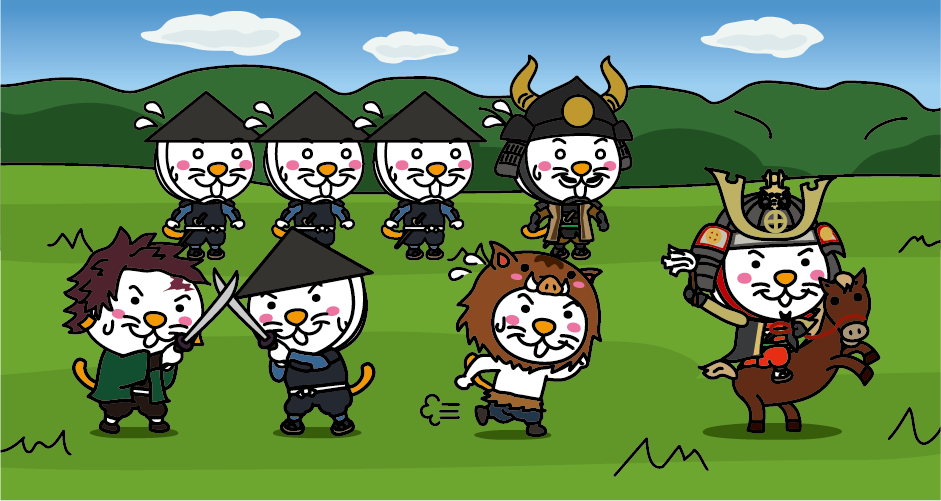
Behind Shinmei Shrine, there is a stone monument marking the site of Yoshihiro Shimazu’s camp. After Hideaki Kobayakawa changed sides, the Western Army collapsed and each unit of the Western Army was routed one after another, while Yoshihiro Shimazu’s corps, which had been reduced to about 300 soldiers, dared to break through directly to Masanori Fukushima’s corps. Using a tactic that was later handed down as “Shimadzu’s Nokiguchi,” commonly known as “Sutegamari,” he ran through the Ise Kaido, passed through the Yoro Mountains, reached Sakai, and then used the sea route, Yoshihiro Shimazu was able to return to Satsuma (now Kagoshima Prefecture).
The “Sutegamari” was a tactic in which a few soldiers would fight to the death against an advancing enemy army in order to let Shimazu Yoshihiro to escape, and when that stranded troop was annihilated, a new stranded troop would be left on the retreat route, and this would be repeated until Shimazu Yoshihiro was able to escape.
By this tactic, Yoshihiro Shimazu’s nephew Toyohisa Shimazu and chief retainer Moriatsu Choujuin were killed, while Tadayoshi Matsudaira and Naomasa Ii of the Tokugawa forces who relentlessly pursued them were seriously wounded, and Tadakatsu Honda fell from his horse. Ieyasu Tokugawa ordered to halt the pursuit, and the battle ended. It is said that about 80 Yoshihiro Shimazu’s troops returned to Satsuma alive.
Historic Site: Sekigahara Battlefields, Ieyasu Tokugawa Last Camp Site
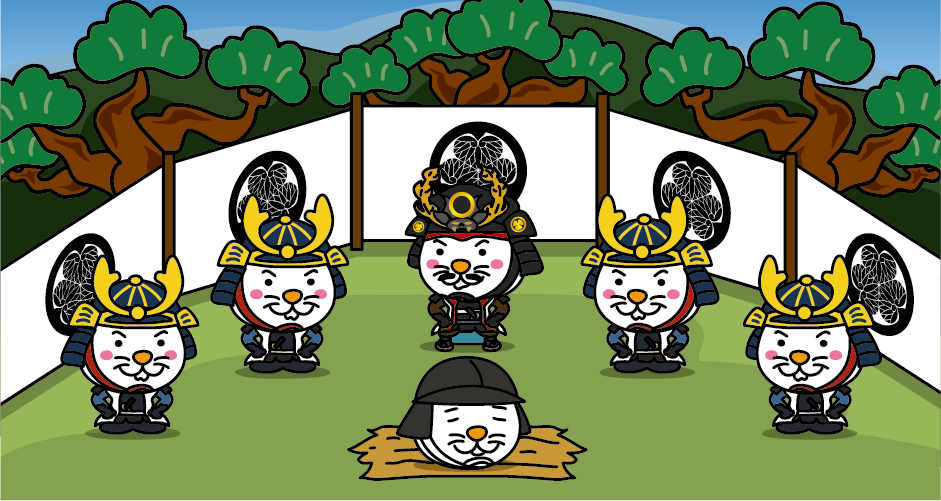
Near JR Sekigahara Station, there is a stone monument of “Ieyasu Tokugawa’s Last Camp Site (Shogiba)” in Jinbano Park. Around noon on the day of the battle, Ieyasu Tokugawa moved his headquarters from Mt. Momokubari to the center of Sekigahara, in front of Mt. Sasao (approximately 800m in a straight line). It is said that he threatened Hideaki Kobayakawa, who was stationed on Mt. Matsuo, from this place with a gun. After the battle, I checked the head class of the enemy who had been killed at this place.
Gifu Sekigahara Battlefield Museum
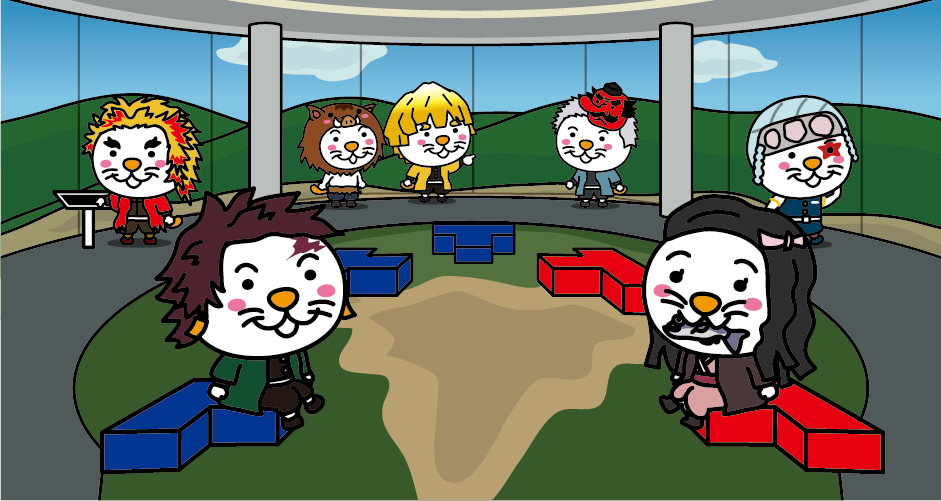
For those who want to learn more about the history of the Battle of Sekigahara, we recommend visiting the Gifu Sekigahara Battlefield Museum, an interactive museum. On the top floor of the five-story memorial hall, there is a 360-degree glass-enclosed observatory where you can see the current Sekigahara.
Access to Gifu Sekigahara Battlefield Museum
From Tokyo
It takes about 2 hours from JR Tokyo Station to JR Nagoya Station by Tokaido Shinkansen. Transfer to a local train on the JR Tokaido Main Line at JR Nagoya Station, and it takes about 50 minutes from JR Nagoya Station to JR Sekigahara Station.
From Osaka
It takes about 30 minutes by Tokaido Shinkansen from JR Shin-Osaka Station to JR Maibara Station. Transfer to the JR Tokaido Main Line Special Rapid at JR Maibara Station and it takes about 20 minutes to get to JR Sekigahara Station.
About 10 minute-walk from JR Sekigahara Station.

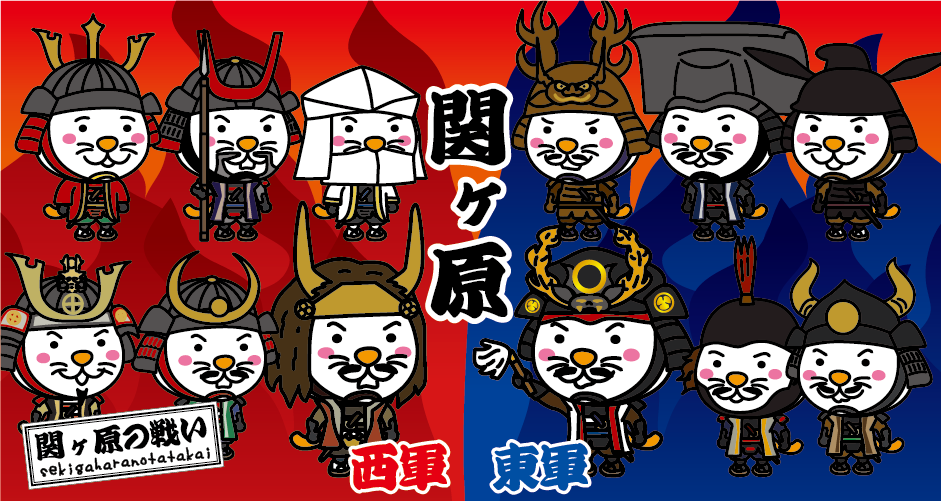


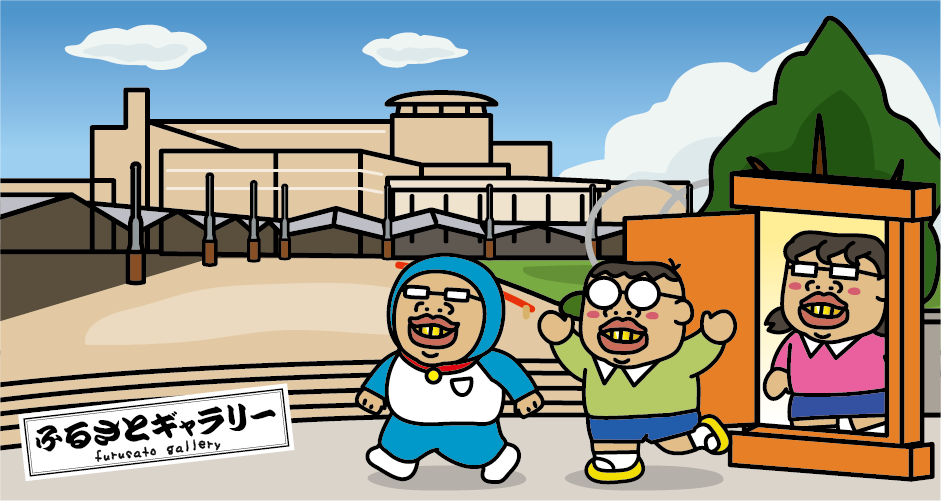
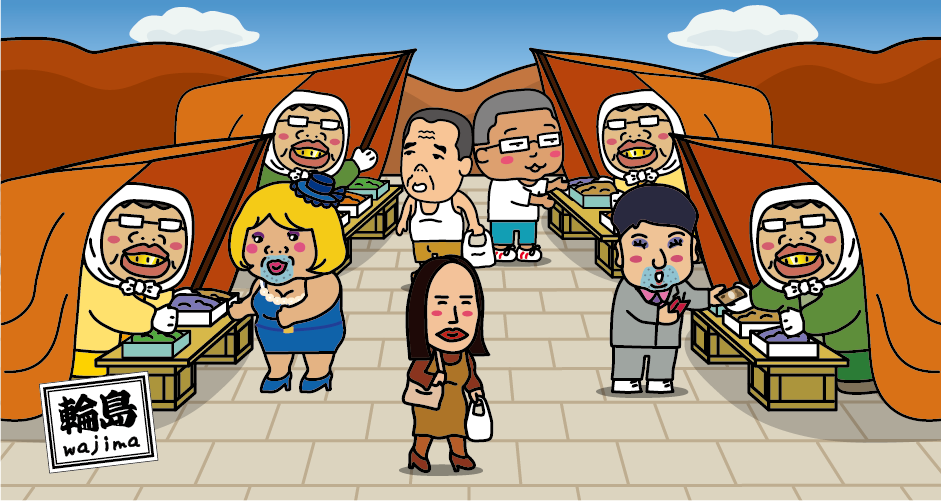
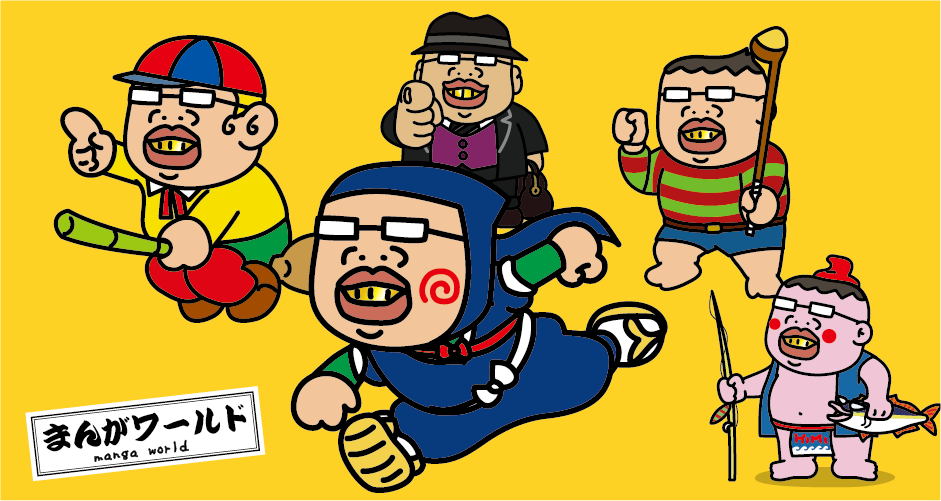
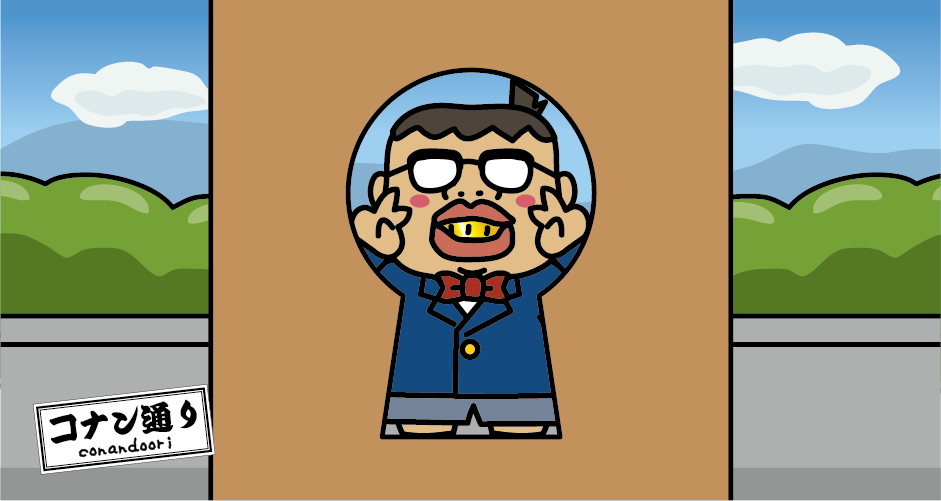
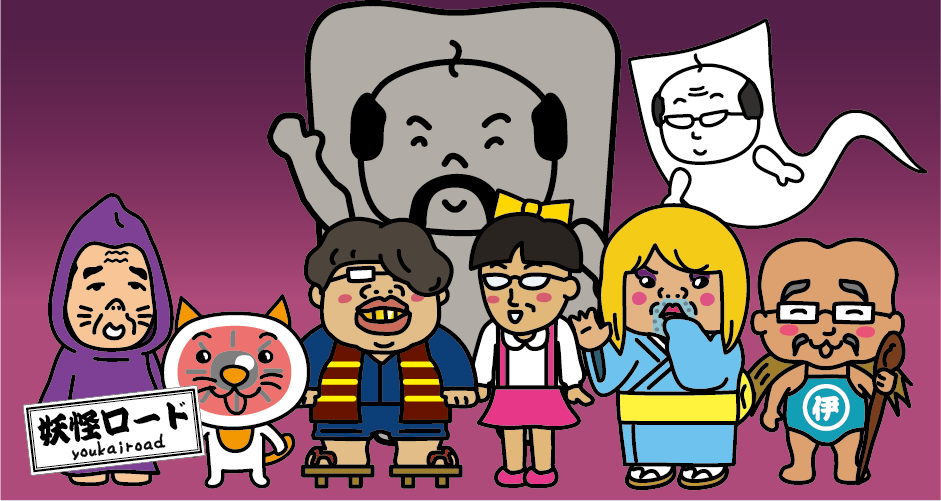

You need to login to comment on an article.